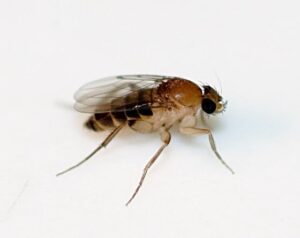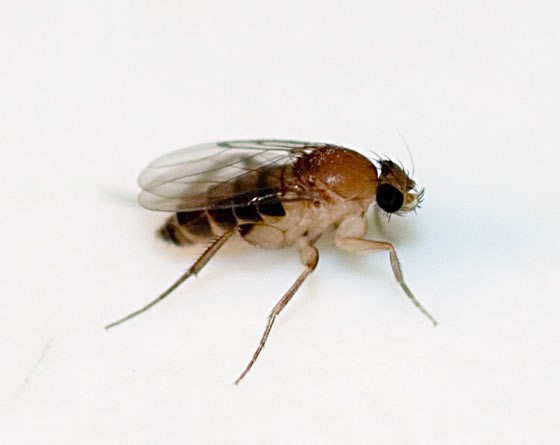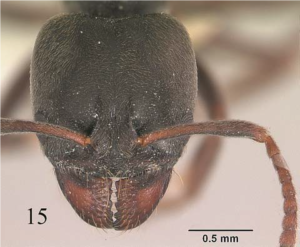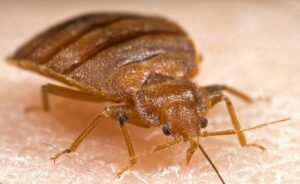Phorid Fly or Humpbacked Fly:
General Description
|

Credit: Charles Schurch Lewallen – bugguiude.net |
- Larvae are less than 10 mm long, lack an apparent head, and possess abdominal projections that range from being inconspicuous to large and
- They often run and stop repeatedly before taking wing, giving them another common name, “scuttle ”
Life Cycle and Common Characteristics
- The phorid fly’s life cycle is complete metamorphosis and it can grow from egg to adult within 14 to 37 days, depending on
- Eggs are laid on or beside moist decaying
- Breeding mediums for larvae are decomposing plant and animal matter, fungi, bird nests, feces, dead insects, sewage treatment beds, and commercial mushrooms.
- Phorid flies have an amazing ability to penetrate the soil to locate breeding They can even penetrate six feet or more of soil to infest caskets, earning them still another common name, the “coffin fly.”
- Another breeding source of these flies is soil that is contaminated by leaks around sewer If leaks are noticed in buildings, they can lead to severe indoor fly infestations.
Damages and Medical Implications
- The phorid fly is considered a minor pest that invades human dwellings occasionally.
- They cause a considerable level of nuisance and disease transmission
- They can spread harmful bacteria onto exposed food items or food processing surfaces inside food
- Phorid flies are frequent pests in cemeteries and mausoleums where they develop in liquid wastes associated with decay.



